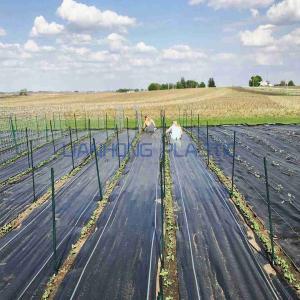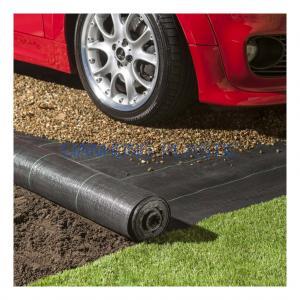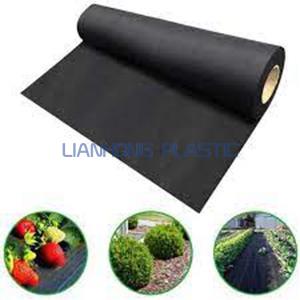How to Install a Weed Barrier?
Method 1: Using Organic Weed Barriers
1 Choose 1 or more organic materials to use as mulch. You can use a wide variety of mulches in your garden. Straw, shredded leaves, and compost are great options. You can also use wood chips or peat moss. Many organic materials can be used for mulch.
· It's really up to you what you use. For instance, straw and shredded leaves might be good in areas where you're walking, while compost near plants will provide added nutrients.
2 Apply your mulch 2 to 3 inches (5.1 to 7.6 cm) thick. Mulch that is applied too thinly allows light to pass through, meaning weeds can grow. Mulch that is too thick can keep water and nutrients from getting to your plants. Therefore, you need to apply it in a nice, even layer that's not too thick and not too thin.
· It's easiest to bring a wheelbarrow of mulch over to the area. Use a pitchfork or shovel to transfer it to the ground, and then spread it out evenly.
3 Cover all of the soil. If you leave soil open, it's an invitation for weeds. Therefore, make sure you're covering all of the bare soil, as that's the only way to create an effective Weed Barrier.
· Leave space around the plants. Plants need 1 to 2 inches (2.5 to 5.1 cm) of space around the base for breathing room.
4 Check on it throughout the year. Organic weed barriers break down over time. That adds nutrients to the soil, but it also means your layer of mulch is smaller, creating opportunities for weeds to flourish. As your mulch wears down and you start noticing more weeds, sprinkle on additional mulch to keep the weeds down.
Method 2:Recycling Fibers for a Weed Barrier
1 Use old paper, fabric, or cardboard as a weed barrier. In this category, you have things like newspapers, cardboard, brown paper sacks, or even a biodegradable fabric. You'll create a barrier that won't let light through to weed seeds but that will also decompose over time.
Stick to black and white newspaper or corrugated cardboard. Slick papers and cardboards may contain more toxic materials. Natural fabrics, such as muslin or other cottons, work best.
2 Spray down the area. Water the area you want to cover very well. Wet ground will help the cardboard and paper "stick." Plus, it will help the plants you want to keep stay moist.
3 Lay the weed barrier down. Place the newspaper or cardboard over the weeds and the parts of your garden you want to keep weed-free. Leave 1 to 2 inches (2.5 to 5.1 cm) of space around plants in your garden or in areas you want to put plants. Use several layers of newspaper or a single layer of cardboard, making sure to overlap as you go so you don't leave bare spots.
4 Water the barrier into the ground. Once you have it all laid out, water it thoroughly. You want the paper or cardboard absolutely soaked, so it will stay on the ground.
5 Apply wood chips or bark if desired. On top of the paper or cardboard, you can apply a layer of wood chips. This layer will help anchor the paper or cardboard to the ground and hide the ugliness of the paper. However, you can use a thinner layer than if you just applied mulch.
Method 3:Installing Weed Barrier Fabric
1 Pick beds that house annuals instead of perennials. Weed barrier fabric works best if you reinstall it each year, so pick beds where you'll need to pull out plants and add new ones each year. That way, you can just pull up the barrier fabric with the plants and replace it.
2 Ensure your fabric is permeable. You obviously want water and nutrients to get through to your plants, so your fabric needs to be permeable. Check the label to see what it says. If you're not sure about your fabric, try pouring water on it. If it drips through, it's permeable. If it doesn't, it's not.
3 Lay the fabric out in one long piece. Start by tacking down 1 end of the fabric at the edge of the bed with a stake or pin. Going lengthwise, pull the fabric along the whole length of the bed. Stake the end of the fabric at the other end of the bed, going over any barriers like rocks and plants. Don't worry about it overlapping the edge of the bed.
4 Cut out the pieces around barriers. Once you've staked down the fabric, go back and cut out around any barriers, such as plants or rocks. You can use regular scissors. Leave about 6 inches (15 cm) of space all around the plants. Also, cut along the edge of the bed, making the fabric align with the bed.
If you're installing it in a bed that doesn't have any plants yet, you'll need to cut out spots where you want the plants to go.
5 Apply the next piece alongside it. If your bed is wider than one piece of fabric, lay a piece next to it. Use the same principles of staking and cutting to install the fabric.
6 Anchor the edges down. Drive in stakes around the edges of the barrier, so that it stays in place. Otherwise, the fabric will come up later, and it will look unsightly in your garden bed.
7 Place mulch on top. Once you have the fabric barrier in place, you can add mulch on top. You only need enough to cover the fabric. You can use natural mulch or gravel, whatever your preference is. However, keep in mind that organic mulch can break down into soil, creating a space for weeds to grow.





